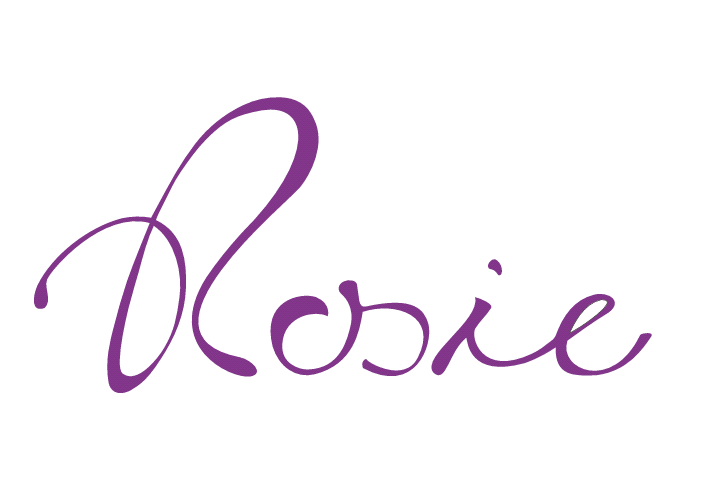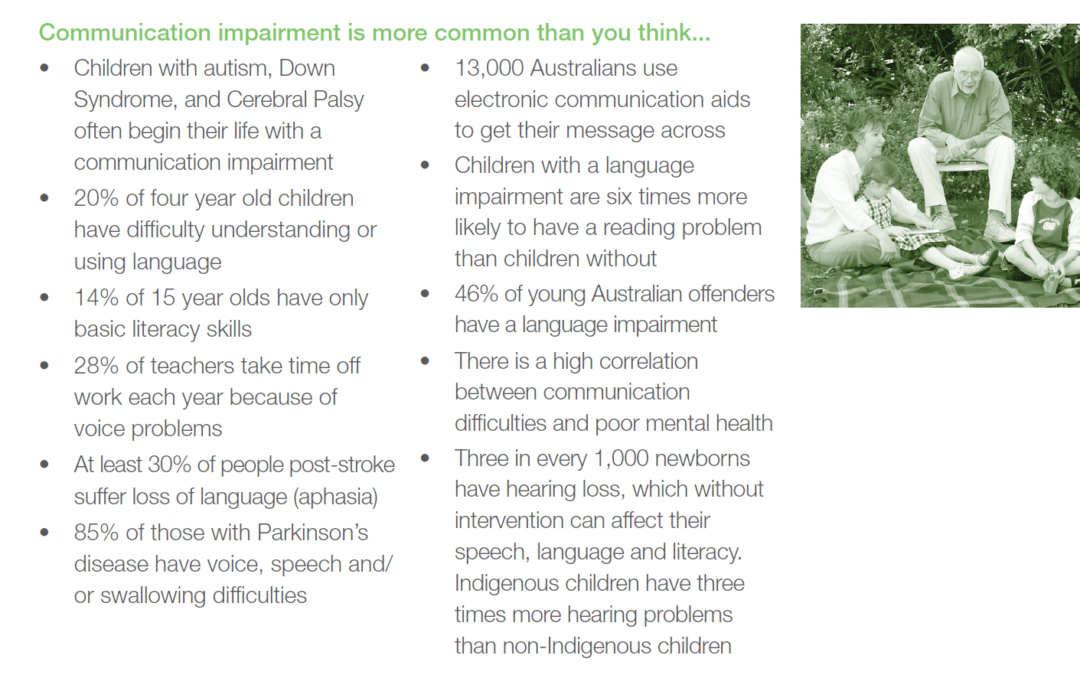More than 40 years ago I began a Bachelor of Applied Science in Speech Pathology. A few years before this, in 1975, the profession had been renamed ‘Speech Pathology’, from ‘Speech Therapy’. Speech therapists of that era, forerunners and groundbreakers, had identified that the name ‘Speech Therapy’ didn’t create the full professional picture of the work done by the profession. They were concerned that the word ‘Therapy’ didn’t tell the story of the professional work of assessment, diagnosis, and multidisciplinary collaboration. So, we became ‘Speech Pathologists’. (Though four decades later, ask any speech pathologist, people might still ask “What’s the difference between speech pathologists and speech therapists?”)
My Head of School back then, Kate Stratford, herself at that time a speech therapist cum speech pathologist of forty years, felt that the new name was not yet complete.
“The problem” she said, “is the word ‘speech’”. Kate went on to talk about how this word may limit people from understanding that the profession supports all the skills of human communication, in addition to speech production. It includes how people connect; it includes language comprehension and expression, knowledge of the typical development and also the atypical development of language; it includes enabling communication after life-saving but potentially physically devastating surgery to treat head and neck cancer; also voice use, social communication, non-verbal communication, communicating through sign language, using electronic devices to communicate when speech is not possible for a person, rehabilitation after stroke or brain injury, including supporting safe swallowing if the control of the muscles that orchestrate swallowing has been damaged; it includes language in the written mode, namely literacy, and how reading and writing are the skills of language placed on a page (back then she did not say ‘screen’) rather than vibrating that message into the air via the vocal cords.
Ask any speech pathologist, forty years later, people still say, “I had no idea speech pathologists did all that.”
Kate went on, “The profession needs the word ‘communicate’ in its name. Clinical Communicology, perhaps”.
I don’t know if my Class of ’84 mates have remembered that Kate said this in our very first year of the program, but I have never forgotten. Her words gave me insight that the profession I was entering was a great one; supporting human communication in all its forms.
Honouring Kate’s words and her memory, I am unsure – and I suspect she was too – if the title Clinical Communicology would lead to widespread knowledge in the general population about the professional work of speech pathologists. In 40 years, people might still ask “What does a Clinical Communicologist do?”
So, reaching beyond the name, this week is Speech Pathology Week! Its purpose is to share with you the large breadth and scope of the work of speech pathologists. This year its theme is Good Communication, Better Communities.
The coronavirus pandemic elevated social isolation and the mental struggle and unwellness that accompanies it, into our consciousness in new ways. Most of us have felt this isolation in ourselves and seen it amplified in others. Many Australians with communication disability were living with a similar experience of isolation before the pandemic. And they are at higher risk of continuing to live with it even after the pandemic disruptions settle.
But connection and communication are antidotes to isolation.
This paints the big picture of the work of speech pathologists. It is a profession that supports the skills of social participation, health, and meaning, in those who through disability or other reason, have communication impairment. Our work helps develop these needed skills in individuals. It also helps people in our communities who don’t have communication impairments, to know how to enhance their communication warmly and respectfully with those who do. When this happens, isolation shrinks.
Good communication across diversity leads to better communities. Good communication that yields connection grows empathy, patience, understanding, insight, and other-minded respect; it grows the networks of care that themselves are the strong bonds of community. It’s always a two-way process. We all have something to learn when communication is difficult for any reason.
Speech pathologists welcome those without communication disabilities becoming curious about the role they can play in connecting with those who do. This is also a large part of the work our profession fosters. To flourish as members of communities, we all need this awareness and skill. Communication disability doesn’t discriminate. It touches all classes, all races. It touches all ages. Those living without communication disability now, may tomorrow become neighbour or classmate to someone with it… or give birth to that someone… or through unexpected incident, become that someone.
Good communication, better communities. Within connected communities lie the resources to manage all adversity and share all joy. Now that’s communicology in which we can all participate!
Happy Speech Pathology Week!
A version of this article first appeared in Hobart’s The Mercury Newspaper on 23rd August 2022.
Image from Speech Pathology Australia fact sheet Communication Impairment in Australia: FS02_Communication_Impairment_in_Australia.pdf

